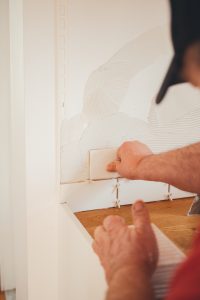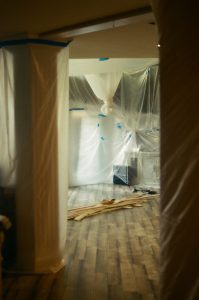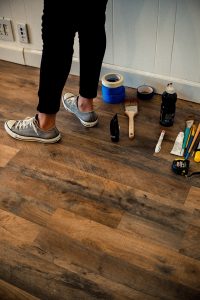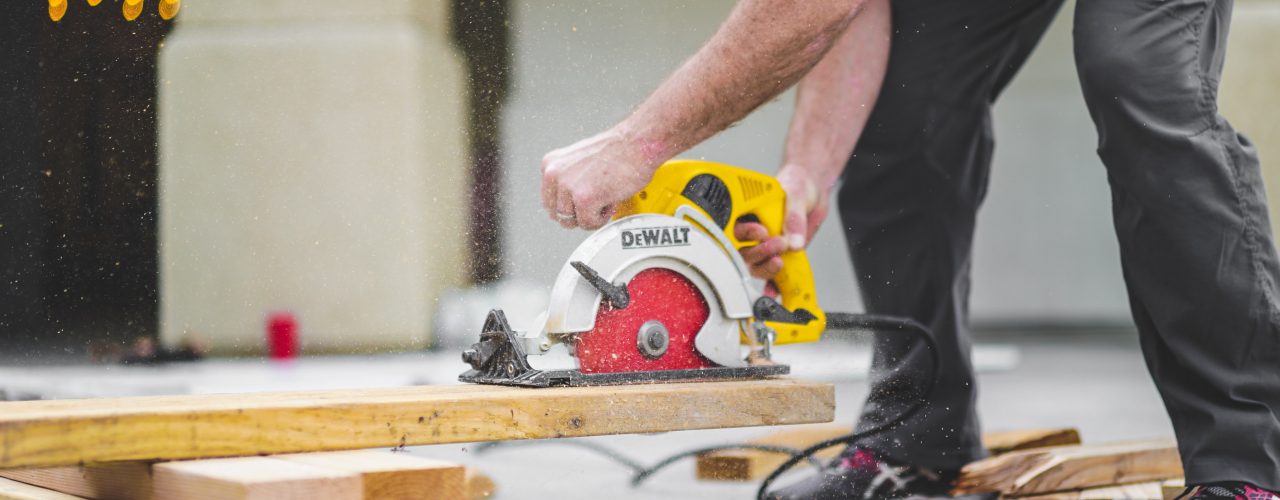Key Trends in the 2021 Cost vs. Value Report
The release by Zonda of the 34th annual Cost vs. Value report finds exterior improvement projects continuing a multiyear trend of providing the greatest return on investment (ROI) for homeowners. Indeed, 11 out of the 12 projects with the highest ROI were exterior improvements. At the top is the replacement garage door (No. 1), sidings (including manufactured stone veneer at No. 2), and windows. The indoor exception, sitting at No. 3, is the minor kitchen remodel – a modest face lift of kitchen surfaces that offers a relatively high return when done prior to the sale of a house.
Thinking of remodeling your home?

2021 National Averages
| Garage Door Replacement |
$3,907 |
$3,663 |
93.8% |
| Manufactured Stone Veneer |
$10,386 |
$9,571 |
92.1% |
| Minor Kitchen Remodel | Midrange |
$26,214 |
$18,927 |
72.2% |
| Siding Replacement | Fiber-Cement |
$19,626 |
$13,618 |
69.4% |
| Window Replacement | Vinyl |
$19,385 |
$13,297 |
68.6% |
| Siding Replacement | Vinyl |
$16,576 |
$11,315 |
68.3% |
| Window Replacement | Wood |
$23,219 |
$15,644 |
67.4% |
| Deck Addition | Wood |
$16,766 |
$11,038 |
65.8% |
| Entry Door Replacement | Steel |
$2,082 |
$1,353 |
65.0% |
| Deck Addition | Composite |
$22,426 |
$14,169 |
63.2% |
| Grand Entrance | Fiberglass |
$10,044 |
$6,116 |
60.9% |
| Roofing Replacement | Asphalt Shingles |
$28,256 |
$17,147 |
60.7% |
| Bath Remodel | Midrange |
$24,424 |
$14,671 |
60.1% |
| Bath Remodel | Universal Design |
$38,813 |
$22,475 |
57.9% |
| Major Kitchen Remodel | Midrange |
$75,571 |
$43,364 |
57.4% |
| Roofing Replacement | Metal |
$46,031 |
$25,816 |
56.1% |
| Bath Remodel | Upscale |
$75,692 |
$41,473 |
54.8% |
| Master Suite Addition | Midrange |
$156,741 |
$85,672 |
54.7% |
| Major Kitchen Remodel | Upscale |
$149,079 |
$80,284 |
53.9% |
| Bathroom Addition | Midrange |
$56,946 |
$30,237 |
53.1% |
| Bathroom Addition | Upscale |
$103,613 |
$54,701 |
52.8% |
| Master Suite Addition | Upscale |
$320,976 |
$152,996 |
47.7% |
Sorted by the highest percentage of cost recovered (or return on investment), this chart ranks all 22 projects in the Cost vs. Value report. A relatively steep increase in costs during 2020 resulted in lower ROI figures compared to years past.
Click here to see the Pacific Regional Data [AK, CA, HI, OR, WA]
Click here to see the Mountain Regional Data [AZ, CO, ID, MT, NM, NV, UT, WY]
Cost Influence
The trend of exterior replacements outperforming larger discretionary remodeling projects has been accelerated, no doubt, by a year in which COVID has made people reluctant to have contractors inside their homes, but yearning to improve outdoor spaces. It’s been a year when we’d expect decks to reign supreme, but the data doesn’t track what’s most popular. The Cost vs. Value report tracks the ratio of value over cost for 22 common remodeling projects, and in that ratio lies the rub: Material costs, especially for decking and pressure-treated framing lumber, went the through the roof in 2020, bringing down the return despite the project’s value.
The effect on ROI of rising material costs is shown across the board for all projects, with the ROI for all projects down an average of 3 percentage points. The wood deck project shows the greatest decrease in ROI (-10.3%) and the highest increase in material costs (+13.6%).
A look at yearly trends (see chart below) shows that project costs have risen consistently since 2014, with a sharp increase in costs in the last year brought on by supply-chain disruptions largely created by the pandemic but complicated by global trading tariffs. Mirroring the increase in costs, the value-over-cost ratio as a percentage has steadily declined over the same period, with the sharpest decline (-3.7%) in the last decade occurring in 2020 (compare to a decrease of -2.4% for the year before).
These trends are based on the national averages for 15 projects that have appeared in the Cost vs. Value report over the last 13 years.
The Focus on Home Sale Price
The Cost vs. Value report aims at a very specific question: What value does a particular remodeling project add to the sale price of a home? This is only one kind of value that homes can provide, but it proves to be an important assessment.
The value data in the report was derived in prior years from surveys of real estate professionals asked to rate the value of the 22 projects. For 2021, Zonda has revamped the report’s methodology, providing an econometric model that overcomes a past problem of surveying enough real estate professionals. Built onto the survey results, the new model sifts in a range of other variables, including local GDP, housing starts, existing home sales, existing home values, changes in existing home sales and existing home values, among others. What’s important to grasp here is that all of these are variables that influence the sale price of homes in a specific location, and that is what defines the value side of the calculated ROI.
For 2021, Zonda has revamped the report’s methodology, providing an econometric model that overcomes a past problem of surveying enough real estate professionals. Built onto the survey results, the new model sifts in a range of other variables, including local GDP, housing starts, existing home sales, existing home values, changes in existing home sales and existing home values, among others. What’s important to grasp here is that all of these are variables that influence the sale price of homes in a specific location, and that is what defines the value side of the calculated ROI.
“Location, location, location” we know as the first principle of real estate, and the Cost vs. Value report addresses this by providing data for 150 metro areas (up from 100 last year). New for 2021, the report also allows users to drill down to data at the ZIP code level within each metro area covered to get a more fine-grained view of how costs and values differ on a local basis.
If we begin to think a bit more like a real estate professional, we begin to grasp how to fully understand Cost vs. Value.
Exterior projects. To begin with, it helps explain why exterior projects retain their strong return on investment: “Curb appeal” and “first impressions” are strong concepts in real estate because they have a big impact on how much money prospective home buyers are willing to pay for a home. If they start out thinking the house looks good – is in good shape, has “good bones” – they begin to fit all the new information they learn once they walk through the front door around these positive impressions. The reverse – driving up and seeing a dilapidated garage door or a house in need of a paint job – has the reverse effect: Buyers start to downgrade what they are willing to pay for it. While these impressions are highly subjective, they tend to influence buyers in a remarkably consistent ways.
Discretionary projects. While still returning a decent return on investment, the larger discretionary projects, such as kitchen, bath, and master-suite remodels, tend to have a lower impact on the price of a home. These projects typically involve a number of product options that have strong appeal to the client making the selections but tend to be too individualized to provide broad appeal. There is no one best cabinet style or color, no perfect tile, or fixture design that everyone likes. Certainly, there are design trends that have wide appeal among a range of homeowners. But because of the vast differences in aesthetic tastes, real estate brokers know that one person’s elegant new kitchen or bath may be viewed by other prospective buyers as unappealing, overstated, or otherwise in need of a reset.
investment, the larger discretionary projects, such as kitchen, bath, and master-suite remodels, tend to have a lower impact on the price of a home. These projects typically involve a number of product options that have strong appeal to the client making the selections but tend to be too individualized to provide broad appeal. There is no one best cabinet style or color, no perfect tile, or fixture design that everyone likes. Certainly, there are design trends that have wide appeal among a range of homeowners. But because of the vast differences in aesthetic tastes, real estate brokers know that one person’s elegant new kitchen or bath may be viewed by other prospective buyers as unappealing, overstated, or otherwise in need of a reset.
Get the Conversation Started
Building professionals are focused on a lot more than resale value when they begin discussing a project budget with prospective clients. Pride in design and craftsmanship, occupant health and safety, long-term durability of materials, reductions in liability, and potential for repeat business are all top of mind for the professional remodeler entering into a new project. But all these factors, and the different values attached to them, are not necessarily understood by clients.
Cost vs. Value serves to get the conversation started.  By focusing first on the value of the client’s investment, defining it the way a broker might, a remodeler can zero-in on a client’s biggest anxiety, cost. Instead of leading with their costs, they can first deliver a generalized cost that demonstrates that the project they are considering will have a definite return. Once that’s established, the contractor can go on to show the client how to think like a remodeler, raising the client’s understanding and appreciation of the total value of a company’s work. And finally the remodeler can move the conversation forward to reveal the specific costs they have for the project at hand.
By focusing first on the value of the client’s investment, defining it the way a broker might, a remodeler can zero-in on a client’s biggest anxiety, cost. Instead of leading with their costs, they can first deliver a generalized cost that demonstrates that the project they are considering will have a definite return. Once that’s established, the contractor can go on to show the client how to think like a remodeler, raising the client’s understanding and appreciation of the total value of a company’s work. And finally the remodeler can move the conversation forward to reveal the specific costs they have for the project at hand.
The cost data in the Cost vs. Value report does include a standard mark-up of 10% on materials and 10% on labor. This is a starting point. It may be considered low by many contractors who build high value into their work with things like a well-paid workforce that receives good benefits to ensure that a high level of dedicated, skilled, and trust-worthy talent will be working on the project. Those are the sort of details that contractors will discuss with clients as they work to broaden the definition of home value, and distinguish their company as the best one to complete the project.
What the Numbers Mean
Although the costs used in the Remodeling Cost vs. Value Report are based on itemized estimates, the projects are imaginary. When comparing the data in this report to actual remodeling costs in a particular geographic area, small differences in the size or scope of a project, or in the quality of finishes and accessories the homeowner chooses, can dramatically affect the price. Although the distinction the Report makes between “midrange” and “upscale” projects provides a range of pricing, it cannot account for extreme variations in pricing that many markets have experienced in recent years. Some of this variation is due to the effects of the deep recession and the imbalanced recovery in different regions. High demand for skilled labor continues to dampen production. Material costs, on the other hand, have not retreated and in most cases have steadily increased. The result is a business climate that exhibits unpredictable pricing within markets and between one market and another.
Smaller Projects
Another factor to keep in mind when comparing costs in the Cost vs. Value Report to local costs for specific projects is that homeowners continue to scale back their remodeling plans, choosing either to reduce square footage below that specified here, or to perform the work in phases to spread the cost over time. Homeowners may be conservative when choosing fixtures and finishes. They continue to trade the savings on lower-priced items for the ability to afford higher-priced items they deem more essential or more desirable.
Subjective Value
The “value” of a project at resale is always subject to forces that are difficult to predict. Changing how a space is used may meet the immediate needs of the current homeowner but may be at odds with what prospective buyers are looking for. Converting a small bedroom into a grand master bath, for example, may be perceived as the loss of a bedroom rather than the gain of a bathroom. Similarly, adding square footage may solve immediate space needs, but it also adds to maintenance costs and it increases heating and cooling bills, something that may not be welcomed in this era of heightened energy awareness.
How the value of a remodeling project is perceived also depends on a variety of factors that traditionally affect home values, including the condition of the rest of the house, the value of similar homes nearby, and the rate at which property values in the surrounding area are fluctuating. Comparable values are still difficult to judge due to the persistent presence of foreclosed properties and short sales. Until potential buyers are convinced that housing prices have hit bottom, they will not experience any sense of urgency, further contributing to the downward pressure on house prices.
The Cost vs. Value Report provides an accurate snapshot of the national housing market but it cannot be applied accurately to an individual remodeling project for a particular address. Resale value is one factor among many that a homeowner must take into account when making the decision to remodel. At the local level, the best course of action is to obtain construction cost estimates from reputable local remodelers and to talk with an experienced real-state professional about home prices in the neighborhood.
Ready to get started on your home project?
Let our experts guide you through it!








 For 2021, Zonda has revamped the report’s methodology, providing an econometric model that overcomes a past problem of surveying enough real estate professionals. Built onto the survey results, the new model sifts in a range of other variables, including local GDP, housing starts, existing home sales, existing home values, changes in existing home sales and existing home values, among others. What’s important to grasp here is that all of these are variables that influence the sale price of homes in a specific location, and that is what defines the value side of the calculated ROI.
For 2021, Zonda has revamped the report’s methodology, providing an econometric model that overcomes a past problem of surveying enough real estate professionals. Built onto the survey results, the new model sifts in a range of other variables, including local GDP, housing starts, existing home sales, existing home values, changes in existing home sales and existing home values, among others. What’s important to grasp here is that all of these are variables that influence the sale price of homes in a specific location, and that is what defines the value side of the calculated ROI. investment, the larger discretionary projects, such as kitchen, bath, and master-suite remodels, tend to have a lower impact on the price of a home. These projects typically involve a number of product options that have strong appeal to the client making the selections but tend to be too individualized to provide broad appeal. There is no one best cabinet style or color, no perfect tile, or fixture design that everyone likes. Certainly, there are design trends that have wide appeal among a range of homeowners. But because of the vast differences in aesthetic tastes, real estate brokers know that one person’s elegant new kitchen or bath may be viewed by other prospective buyers as unappealing, overstated, or otherwise in need of a reset.
investment, the larger discretionary projects, such as kitchen, bath, and master-suite remodels, tend to have a lower impact on the price of a home. These projects typically involve a number of product options that have strong appeal to the client making the selections but tend to be too individualized to provide broad appeal. There is no one best cabinet style or color, no perfect tile, or fixture design that everyone likes. Certainly, there are design trends that have wide appeal among a range of homeowners. But because of the vast differences in aesthetic tastes, real estate brokers know that one person’s elegant new kitchen or bath may be viewed by other prospective buyers as unappealing, overstated, or otherwise in need of a reset. By focusing first on the value of the client’s investment, defining it the way a broker might, a remodeler can zero-in on a client’s biggest anxiety, cost. Instead of leading with their costs, they can first deliver a generalized cost that demonstrates that the project they are considering will have a definite return. Once that’s established, the contractor can go on to show the client how to think like a remodeler, raising the client’s understanding and appreciation of the total value of a company’s work. And finally the remodeler can move the conversation forward to reveal the specific costs they have for the project at hand.
By focusing first on the value of the client’s investment, defining it the way a broker might, a remodeler can zero-in on a client’s biggest anxiety, cost. Instead of leading with their costs, they can first deliver a generalized cost that demonstrates that the project they are considering will have a definite return. Once that’s established, the contractor can go on to show the client how to think like a remodeler, raising the client’s understanding and appreciation of the total value of a company’s work. And finally the remodeler can move the conversation forward to reveal the specific costs they have for the project at hand.